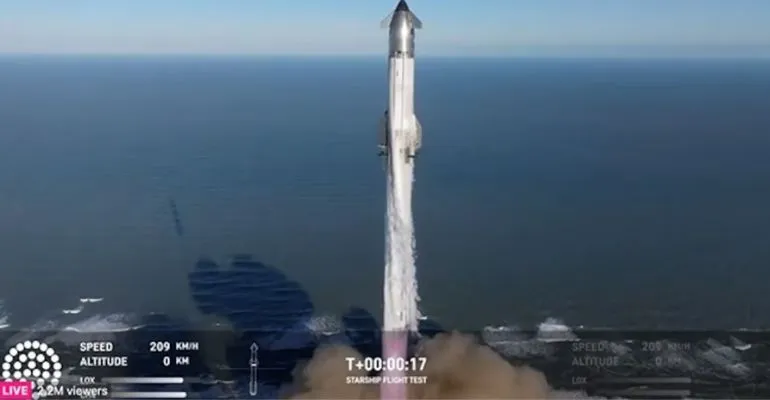On January 16, 2025 at 5 p.m. EST (2200 GMT), Elon Musk’s SpaceX conducted its seventh test flight of the Starship rocket, marking a significant moment in the company’s ambitious space exploration plans.
Unfortunately, the mission ended in failure as the SpaceX Starship exploded shortly after liftoff from its South Texas launch site. This incident raises questions about the implications for future Mars missions and how it compares to previous test flights.
The SpaceX Starship was designed to achieve a full orbit and return safely to Earth. However, just minutes into the flight, the rocket experienced a catastrophic failure. Initial reports suggest that technical issues during the ascent led to the explosion, which occurred approximately four minutes after launch.
This incident follows a series of earlier test flights that also faced challenges, including explosions and loss of control during critical phases of flight.
The implications of this failure on future Mars missions are significant. SpaceX has positioned Starship as a key vehicle for transporting astronauts to Mars, and setbacks like this could delay timelines and necessitate further testing and redesigns.
Elon Musk’s vision for interplanetary travel relies heavily on the success of the Starship program, making each failure a critical learning opportunity for SpaceX engineers.
Comparatively, today’s incident is reminiscent of earlier test flights where SpaceX faced similar challenges.
For instance, previous flights saw the Starship experience “rapid unscheduled disassembly,” a term used by SpaceX to describe explosive failures during testing phases.
Each test has contributed valuable data, helping refine the design and operational protocols necessary for future missions.
As SpaceX continues its pursuit of ambitious goals, including lunar landings and Mars colonization, these test flights remain crucial in shaping the future of space exploration.
What are the primary safety measures SpaceX has implemented following the Starship explosion?
In the aftermath of the recent SpaceX Starship explosion, safety has become a top priority for Elon Musk’s SpaceX. The company has introduced several safety measures aimed at preventing similar incidents in future test flights.
These include modifications to the liquid oxygen venting system to reduce the risk of combustion events and enhanced fire protection protocols.
Additionally, SpaceX has shifted from hydraulic to electric control systems for its Raptor engines, which minimizes potential sources of flammability.
These changes reflect SpaceX’s commitment to learning from each test flight, ensuring that the Starship program remains on track for future missions to Mars and beyond.
The recent explosion of Elon Musk’s SpaceX Starship during its seventh test flight highlights the challenges of space travel.
Although the mission failed, it provided important information that SpaceX can use to make future flights safer.
Sources: (1), (2), (3), (4), (5), (6), (7)
For more trending news and updates, visit here!

Leave a Reply